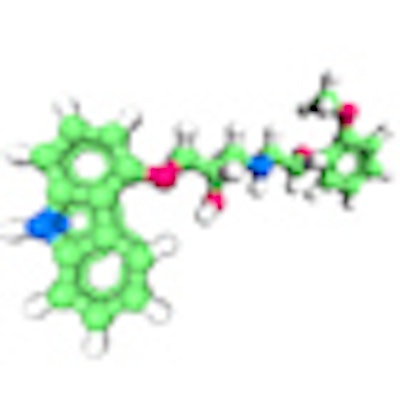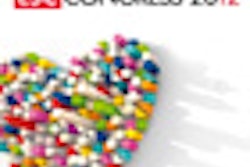
The correct use of beta-blockers for coronary CT angiography (CTA) can reduce heart rate efficiently without increased complications, and oral beta blockade may be more effective than intravenous administration, a large German study has found.
"Adequate image quality is a crucial requirement for sufficient diagnostic accuracy in coronary CTA. Heart rate critically influences image quality, and current guidelines recommend a heart rate ideally lower than 60 beats per minute (bpm)," noted lead author Dr. Johannes Rixe, from the department of cardiology and angiology at the University Hospital of Giessen and Marburg, Germany. "Premedication with beta-blocking agents is commonly used to lower the heart rate for coronary CTA, but there is insufficient data about the effectiveness and safety of beta-blocker use for this purpose."
The aim of the study he presented at the 2012 annual meeting of the European Society of Cardiology (ESC) in Munich was to analyze the clinical practice of beta-blockade for coronary CTA on the basis of a large-scale registry. Ten experienced centers submitted patient characteristics and procedural parameters of patients undergoing coronary CTA to the German Cardiac CT Registry using a Web-based electronic submission interface. A total of 3,483 individuals were analyzed regarding the use of beta-blockers to lower heart rate, procedural data and peri-procedural complications.
Of these patients (mean age 60 ± 12 years, 37% women), 2,653 (76%) received beta-blocking agents. About 65% of patients received only IV beta-blockers, 27% only oral beta-blockers, and 10% received both IV and oral beta-blockers, according to Rixe.
The mean heart rate during the CT scan was 59.5 ± 9 bpm. It was slightly higher for patients with beta-blockers (59.7 ± 8.4 bpm) than for patients without (59 ± 10.7 bpm, p < 0.0001). Oral beta-blockade (mean heart rate 56.4 ± 7.8 bpm) was associated with significantly lower heart rates than IV beta blockade (60.7 ± 8.6 bpm, p < 0.001 for both) or combined oral and IV beta-blockade (62.2 ± 6.7 bpm, p < 0.0001).
The rate of patients with all vessels fully evaluable was higher in those receiving beta-blockers (96.2% versus 94.5%, p < 0.05), and stenoses > 50% could be ruled out more frequently (40.1% vs. 32.6%, p < 0.001), suggesting better image quality in patients on beta-blockade, he pointed out. Procedure-related complications occurred in 37 patients (1.1% of all patients), comprising mostly extravasation injury (0.5% of patients), and they were not different between groups. Symptomatic bradycardia was not observed.
The German cardiac CT registry monitors CTA radiation exposure and contributory factors. It began on 1 July 2009 and by May 2011 there were 4,000 enrolled patients, of whom about 60% were men. The average age was 60.2 years and 66% were outpatients. Around 60% of the patients suffered from angina pectoris. The plan is to expand the national database into a European cardiac CT registry.
Coronary CTA should not be used for screening, but can be a reasonable alternative to invasive angiography to rule out coronary artery stenoses provided it is performed on selected patients by experts using adequate equipment, according to Dr. Stephan Achenbach, also from the University of Giessen.
He told ESC attendees that for a diagnostic test to be useful, it must be accurate (not missing a patient with disease), have prognostic value (negative test: good prognosis), and be safe and "economically reasonable." Overall, coronary CT fulfills these requirements, but radiation dose remains a concern. The mean dose among 4,000 or so patients in the German registry was 5.3 mSv. This can be minimized by ECG pulsing, prospective triggering, and iterative reconstruction, he noted.
In the MEDIC (multicenter evaluation in dual source CT in patients with intermediate likelihood of coronary artery disease) trial involving 415 patients from international sites, only 18 out of 5,777 segments were not evaluable. In six of the 415 patients, there were one or more not-evaluable segments (1.4%), Achenbach said, whose full presentation can be viewed by clicking here.

















